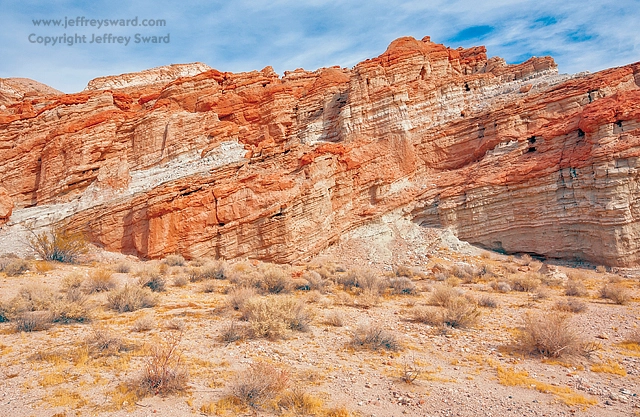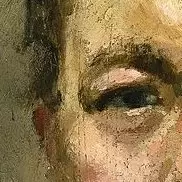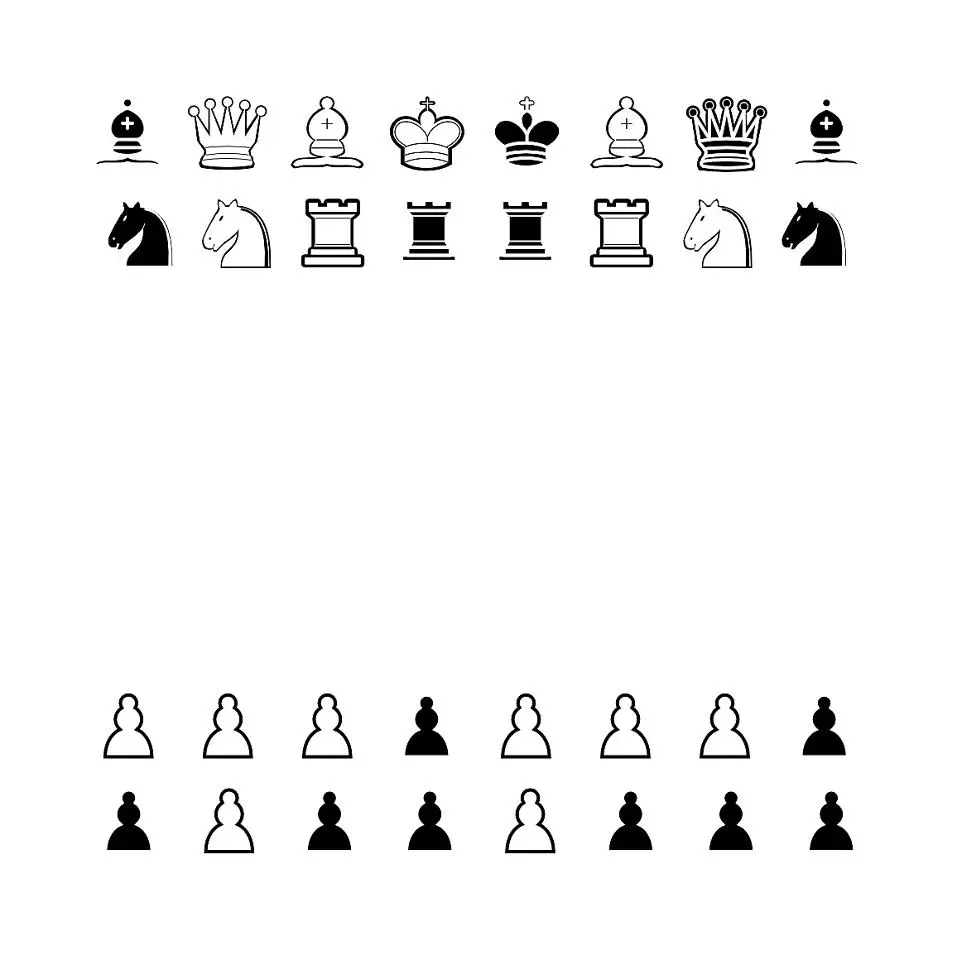Whats with the guy? Is he falling, standing or just incredibly swag?
she
Oh. My bad.
The way I make sense of this is:
The mostly in shadow foreground is something like fairly jagged rocks, or an eroded part of a canyon.
The almost entirely lit background means the foreground obstruction is not too tall to shadow the background.
The white that she is standing on is a pile of snow, which she is descending, toward the viewer.
This pile of snow is itself up against… basically a canyon wall.
Everything seems wonky because the striation lines are diagonal, not horizontal as compared to what up is for the woman.
… But this can and does happen in nature. Sometimes large sections of strata get uplifted unevenly, and then erode.
Example:

Thank you for the detailed explanation. The way you describe it makes total sense.
I saw the snow as a patch and not a hill because there is no dropshadow on the left side and she doesn’t stagger or leave any visible footprints while descending. Those are all deliberate choices by the artist though I guess.
There are foot prints.
It may make sense as … she ascended the snow pile and then turned around to face the viewer.
But yeah, I … I still cannot quite make a 3d model of my interpretation of the scene in my head and have the lighting situation completely make sense.
Some of the shadowed areas do not quite align right… and the foreground element on the right is… ill defined?
I don’t know too much about the artist or art style perhaps the entire point is that the background and foreground just are not supposed to be the focus, not supposed to entirely make sense, what matters is the subject.



